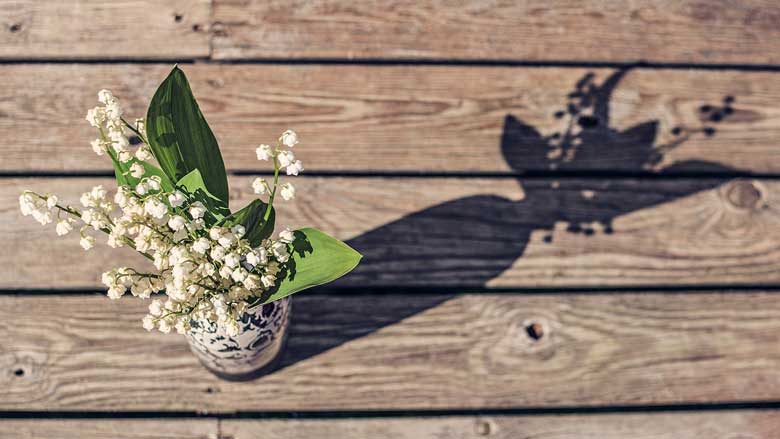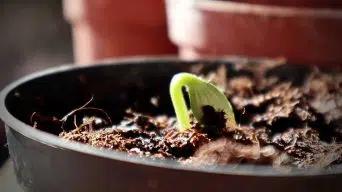Like most people, you probably have a few indoor plants that you love to keep around.
They make your home look more alive and vibrant and provide some health benefits.
But how often should you put your indoor plants outside? And how long should they stay outside?
In this article, we will answer those questions and give you some tips on how to get the most out of keeping indoor plants.
Should I Put My Indoor Plants Outside?
You may have heard that it’s good to occasionally put your indoor plants outside.
But should you take out your indoor plants outside? And what are the benefits?
There are a few things to consider before taking your indoor plants outside.
One is the weather. If it’s too hot or cold, your houseplant won’t be able to survive.
Another thing to consider is how much sunlight exposure your plant can handle. Too much sun can damage leaves and cause them to fade in color.
If you have an outdoor space that gets partial sun exposure and the weather is appropriate, putting your indoor plants outside can be beneficial.
Being outdoors will help your plant to grow stronger and healthier.
The fresh air and increased sunlight will help to promote growth.
Just be sure to bring your plant back inside before it gets too cold or hot outside.
If you’re not sure whether or not your houseplant can handle being outside, it’s always best to err on the side of caution and keep it indoors.
After all, it’s better to be safe than sorry!
How Often Should I Put My Indoor Plants Outside?
You should put your indoor plants outside every two to three weeks.
However, this will depend on a few factors, such as the type of plant, the weather, and how much sunlight exposure the plant can handle.
If you have a tough plant that can survive in hot and cold weather and gets plenty of bright light exposure, you can probably put it outside more often.
However, if you have a delicate plant that doesn’t do well in extreme weather, or one that can’t handle too much sun exposure, you’ll need to be careful about how often you put it outside.
The best way to determine how often you should put your indoor plants outside is to pay attention to how they’re doing.
If they seem to be thriving, you can probably increase the frequency with which you take them out.
However, if they start to look wilted or their leaves begin to fade, it’s a sign that they’re not doing well, and you should cut back on how often you’re taking them out.
In the end, it’s important to use your best judgment and pay attention to how your plants are doing.
By doing so, you’ll be able to find the perfect balance of how often to put them outside.
When Can You Put Houseplants Outside?
The best time to put your houseplants outside is in the spring or summer. This is because the weather is usually milder and there’s more sunlight.
However, you can also put your plants outside in the fall if you bring them back inside before it gets too cold.
Houseplants can be put outside when the temperature is between 60 and 80 degrees Fahrenheit.
If it’s too hot or cold outside, your houseplant won’t be able to survive.
You should also consider how much sunlight exposure your houseplant can handle.
Too much sun can scorch the leaves, so it’s essential to gradually introduce your plant to sunlight.
Start by putting it in a shady spot and then move it into direct sunlight over the course of a week.
Just be sure to acclimate your plants slowly to their new environment.
Start by putting them outside for a few hours and then gradually increasing the amount of time they spend outdoors.
This will help them adjust to the change and prevent them from getting too stressed out.
Should I Put My Indoor Plants Out in the Rain?
If you live in an area that gets a lot of rain, you might be wondering if it’s okay to put your plants outside in the rain.
The answer is yes, as long as the rainfall isn’t too heavy.
Many houseplants benefit from being outdoors in the rain.
The humidity can help moisturize their leaves, and the rainwater can also help clean off any dust accumulated.
Rainwater is good for indoor plants because it’s free of chemicals and other pollutants.
Just be sure to bring your plants back inside if the forecast calls for heavy rains or thunderstorms.
Your plants will also need to be protected from strong winds. You can put your plants on a sheltered porch or balcony if it’s windy outside.
Can You Put Houseplants Outside in the Summer?
Yes, you can put your houseplants outside in the summer if the temperature is not too hot.
As mentioned before, the ideal temperature range for most houseplants is between 60 and 80 degrees Fahrenheit.
If it’s going to be a particularly hot day, you might want to consider giving your plants a little extra protection.
You can do this by placing them in a spot out of the direct sun or by setting up a makeshift shade with a sheet or parasol.
You should also keep an eye on your plants and make sure they’re not wilting from the heat.
If you see that their leaves are starting to droop, it’s a sign that they’re not getting enough water.
Give them a good watering, and then move them to a cooler spot.
Putting your houseplants outside in the summer months can benefit them, but only if you do it correctly.
Can I Leave My Indoor Plants Outside Overnight?
It’s not a good idea to leave your indoor plants outside overnight.
This is because the temperature can drop significantly, and your plant might not be able to handle it.
If you live in an area with cold nighttime temperatures, you should bring your plants inside before the sun goes down.
If it’s going to be a particularly chilly night, you can put them in a spot that’s out of the wind and cover them with a sheet or blanket.
This will help protect them from the cold and give them a better chance of surviving the night.
Indoor plants are generally not as hardy as outdoor plants, so it’s essential to be careful about how you expose them to the elements.
In general, it’s best to err on the side of caution and bring your plants inside at night.
This will help to ensure that they stay healthy and happy.
At What Temperature Can Indoor Plants Stay Outside?
The ideal temperature range for most houseplants is between 60 and 80 degrees Fahrenheit, and there’s no chance of frost.
However, some plants can tolerate temperatures outside this range, and some can tolerate light frost.
Indoor plants are generally not as hardy as outdoor plants, so it’s important to be careful about how you expose them to the elements.
If you’re not sure how your houseplant will react to the temperature, it’s best to err on the side of caution and bring it inside.
You should also be aware that the temperature can vary depending on the time of day and the season.
For example, it might be cooler in the morning or evening than during midday hours.
It’s also important to keep an eye on the forecast and be prepared to bring your plants inside if the temperature drops significantly.
In general, it’s best to play it safe and keep your plants indoors when the temperature is below 60 degrees Fahrenheit or above 80 degrees Fahrenheit.
In general, houseplants should be kept indoors. However, there are times when it’s beneficial to put them outside.
Just be sure to consider the temperature, the weather forecast, and your plant’s individual needs before making a decision.
And always err on the side of caution to ensure that your plant stays healthy and happy.
How Long Should I Leave My Indoor Plants Outside?
In general, you should only leave your indoor plants outside for a few hours at a time.
This is because they’re not used to the elements and can’t handle extended periods of exposure.
The time an indoor plant can tolerate outside will vary depending on the plant.
Some plants can only handle a few minutes of exposure, while others can tolerate several hours.
Also, you should consider the temperature and the weather conditions. If it’s very hot or sunny, your plant will need to be in a spot out of direct sunlight.
And if it’s cold or windy, you’ll need to take measures to protect your houseplant from the elements.
If you decide to leave them out for an extended period, give them extra protection from the sun and wind.
You can do this by placing them in a shady spot or covering them with a sheet or parasol.
You should also check on your plants regularly to make sure they’re not wilting from the heat or cold.
If you see that their leaves are starting to droop, it’s a sign that they need to be brought inside.
In general, it’s best to err on the side of caution and not leave your indoor plants outside for too long.
How to Acclimate Houseplants to the Outdoor Environment?
When bringing houseplants outdoors, it’s essential to consider the temperature, the weather forecast, and your plant’s individual needs.
If you want to leave your indoor plants outside for an extended period, it’s best to acclimate them to the outdoor environment first.
This process can take a few weeks and involves slowly exposing your plant to the elements.
It’s best to do this in the spring or summer so that your plant has time to adjust before the colder months.
You should start by placing your plant in a spot that gets indirect light for a few hours each day. Then, for a few days or weeks, you can gradually increase the amount of time it spends outside.
You should also pay close attention to how your plant is reacting to the change in the environment.
If you see that its leaves are starting to brown or wilt, it’s a sign that it’s not acclimating well, and you should bring it back inside.
It’s also important to keep an eye on the weather forecast and be prepared to bring your houseplants indoors if the temperature drops significantly.
Acclimating your plants to the outdoors is a gradual process that takes time and patience.
But it’s worth it because it will allow you to enjoy your plants for an extended period.
Tips For Putting Your Indoor Plants Outside
Indoor plants are a great way to bring life into your home. They can improve your mood, purify the air, and boost your productivity.
But how often should you put them outside?
Here are a few tips for putting your indoor plants outside:
- Start slowly. If you’ve never put your indoor plants outside before, start with just a few hours at a time. This will give them time to adjust to the change in temperature and humidity.
- Choose a shady spot. If you’re putting your plants in the sun, make sure they’re in a shaded area. They’ll be more likely to survive if they’re not in direct sunlight.
- Be careful of pests. When you put your plants outside, check them for pests. If you see any, remove them immediately.
- Bring them back inside at night. When the temperature drops at night, bring your plants back inside. This will help them stay warm and avoid frost damage.
- Be aware of the weather. If it’s going to be a particularly hot or cold day, you may want to leave your plants inside.
- Choose the right plants. Not all plants are suitable for being put outside. Ensure that you choose plants that can tolerate temperature and humidity changes.
- Monitor them closely. When you first start putting your plants outside, monitor them closely. This will help you catch any problems early on.
Following the tips above will help you successfully put your indoor plants outside.
Just be sure to start slowly, choose the right plants, and monitor them closely.
With a bit of care, you’ll be able to enjoy your plants all summer long!
Final Thoughts
How often you put your indoor plants outside depends on several factors.
The most crucial factor is the type of plant. Some plants need more sunlight than others.
Other factors include the temperature, humidity, and rainfall in your area.
You should also consider the season and how long the plant has been in your care.
With all of these factors in mind, you can decide how often to put your indoor plants outside.
Use your best judgment to determine how often to put your plants outside.
Your plants will thank you for it!







